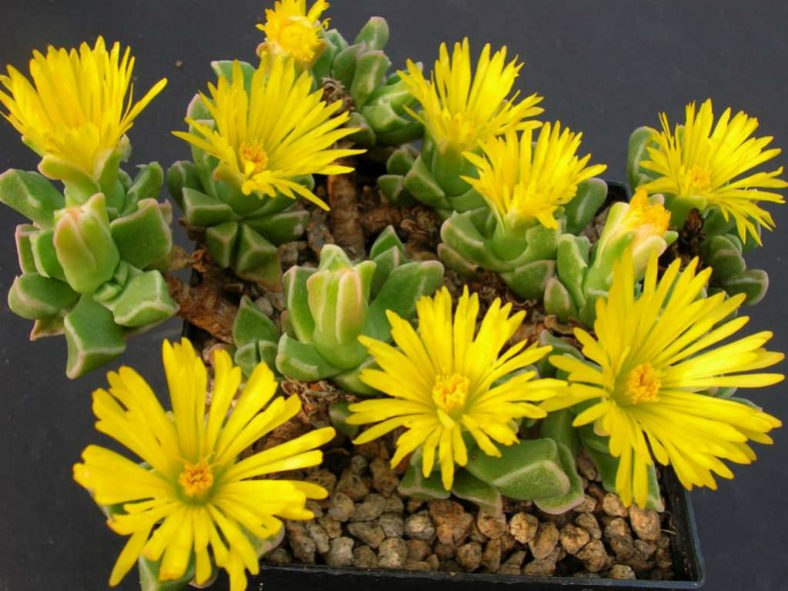Faucaria is a genus of succulent subtropical plants in the family Aizoaceae. The species are commonly known as Tiger Jaws, referring to the spiny-looking edges of the leaves. The name comes from the Latin word "fauces," meaning "animal mouth" because of the appearance of the leaves.
The genus was subjected to an extensive revision by Groen & Van Der Maesen in 1999. As a result, the 30 or so recognized species were reduced to only 6, with the variable Faucaria felina absorbing most of the species. That somewhat solves the issue of the numerous nursery plants sold as Faucaria. The vast majority of them are just Faucaria felina.
Faucarias form clumps of stemless rosettes. They are small plants, up to 3 inches (7.5 cm) in diameter, with thick triangular or semi-circular leaves, light green in color, turning purple in strong sunlight.
Growing Conditions and General Care
The various species make excellent pot subjects and have grown in Europe for over three hundred years. Some species, such as Faucaria tigrina, are quite hardy, while others can be prone to stem rot.
Faucarias are mostly spring and fall growers and need good drainage and a little shade. Even with extreme heat, they will do fine, although they stop growing if not watered every few days. When they lack water, like many other mesembs, the stems die, and some rosettes are not connected to the roots by any living tissue. When found in time, the rosettes can be used as cuttings and kept in the shade in a barely moist medium until the temperature cools down in the fall.

These plants bloom for several months in the fall or the beginning of winter. The flowers open around midday and close in the late afternoon. They often do not open if the weather is cloudy or if they are in the shade. The flower color ranges from yellow to white and even pink.
Most species will take a small amount of frost.
Propagation
Faucarias are easily propagated by division or seeds.
Links
- Back to genus Faucaria
- Succupedia: Browse succulents by Scientific Name, Common Name, Genus, Family, USDA Hardiness Zone, Origin, or cacti by Genus